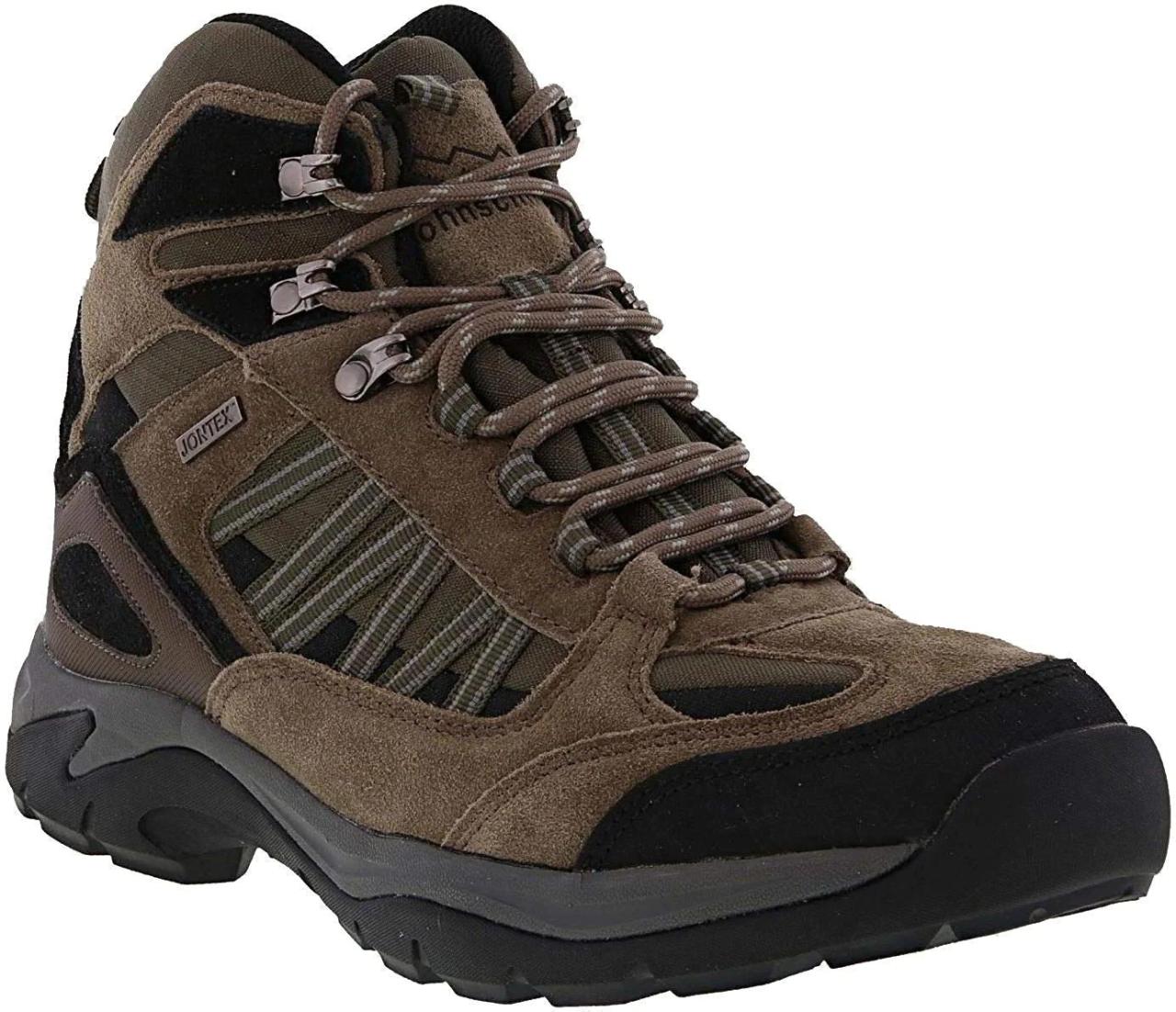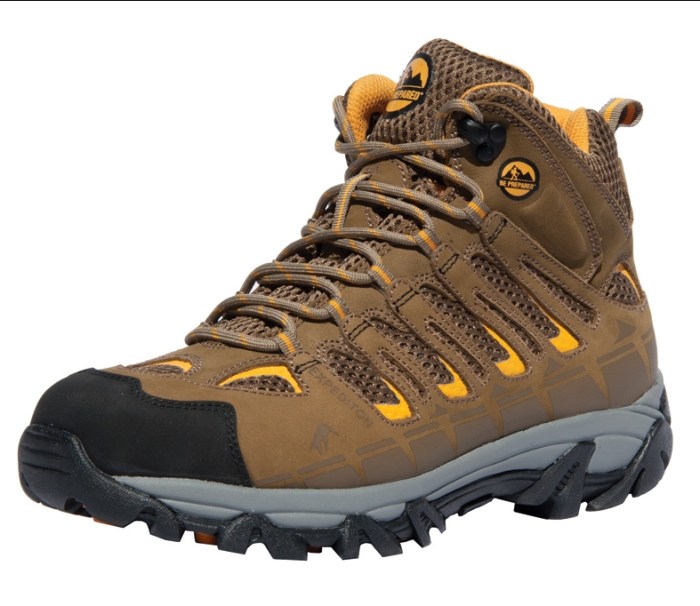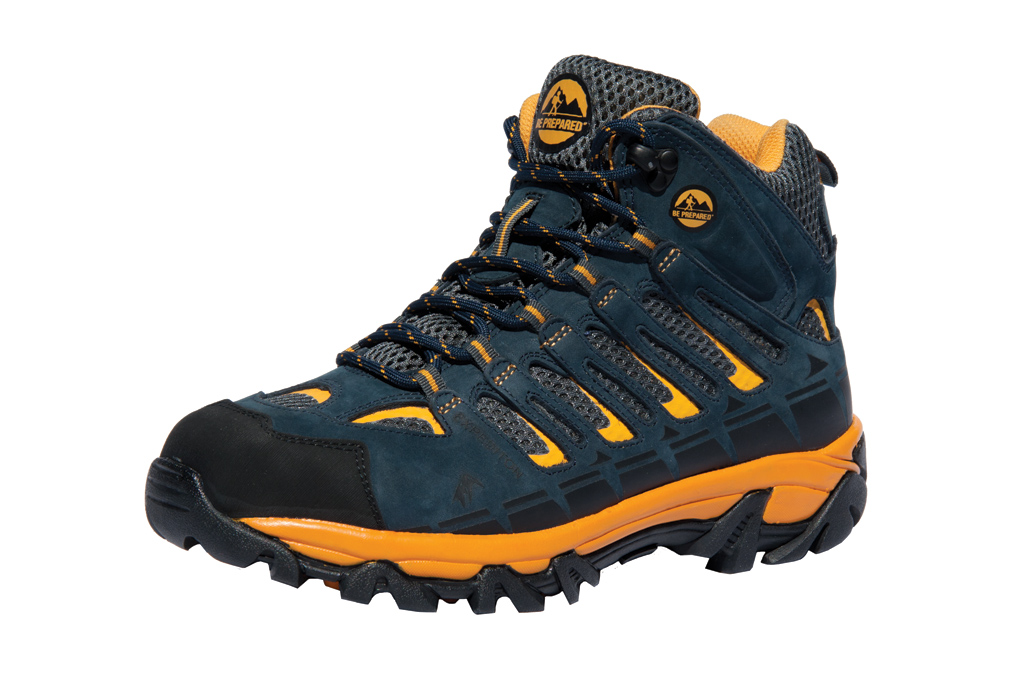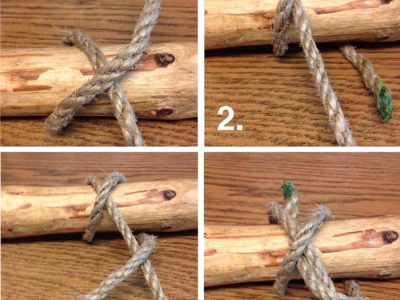Best hiking boots for scouts are an essential piece of gear for any young adventurer. With so many different options on the market, it can be difficult to know where to start. This guide will help you choose the perfect pair of hiking boots for your scout, ensuring they have the best possible experience on their next outdoor adventure.
When choosing hiking boots for scouts, there are a few key things to keep in mind. First, consider the type of hiking your scout will be doing. If they will be hiking on mostly flat trails, a low-cut boot may be sufficient.
However, if they will be hiking on more challenging terrain, a mid-cut or high-cut boot will provide more support and protection.
Hiking Boot Types for Scouts
Scouts require hiking boots that offer protection, comfort, and support during their outdoor adventures. There are three main types of hiking boots to choose from: low-cut, mid-cut, and high-cut. Each type has its own advantages and disadvantages, depending on the terrain and activities involved.
Low-cut hiking bootsare lightweight and provide good breathability, making them suitable for day hikes on well-maintained trails. They offer less ankle support compared to mid-cut and high-cut models.
Mid-cut hiking bootsprovide more ankle support than low-cut boots, making them a good choice for uneven terrain and longer hikes. They offer a balance between ankle protection and breathability.
High-cut hiking bootsoffer the most ankle support and protection, making them ideal for challenging hikes with rough terrain and heavy loads. However, they can be heavier and less breathable than low-cut and mid-cut models.
When choosing hiking boots for scouts, it’s important to consider the type of terrain they will be hiking on, the duration of their hikes, and their individual preferences for comfort and support.
Material Considerations

The choice of materials used in hiking boots is crucial as it directly impacts the boot’s durability, breathability, and waterproofing capabilities. Hiking boots are commonly constructed using leather, synthetic fabrics, or a combination of both.
Leather
Leather, a traditional material for hiking boots, offers exceptional durability and a timeless aesthetic. Its natural fibers provide inherent breathability, allowing feet to stay cool and dry during extended treks. However, leather can be prone to water absorption, requiring regular maintenance and treatment to maintain its waterproofing properties.
Synthetic Fabrics
Synthetic fabrics, such as nylon and polyester, are gaining popularity in hiking boot construction due to their lightweight and breathable nature. These materials offer excellent moisture-wicking properties, keeping feet dry and comfortable even during strenuous activities. Additionally, synthetic fabrics are more resistant to water absorption, making them a good choice for wet and muddy conditions.
Combination of Materials
Many modern hiking boots utilize a combination of leather and synthetic fabrics to achieve a balance of durability, breathability, and waterproofing. This hybrid approach allows manufacturers to create boots that are lightweight, comfortable, and resistant to the elements.
Features for Scout Hiking

Hiking boots designed for scouts should possess specific features to ensure their safety and comfort during outdoor adventures. These features include sturdy construction, supportive insoles, and rugged outsoles.
Additional features such as gaiters, toe caps, and heel counters provide added protection and support for scouting activities. Gaiters help keep debris and moisture out of the boots, while toe caps and heel counters protect the feet from impact and injuries.
Gaiters
- Attachable fabric or leather coverings that extend from the ankle to the lower leg.
- Prevent debris, dirt, snow, and moisture from entering the boots, keeping feet dry and comfortable.
- Essential for hiking in wet or muddy conditions.
Toe Caps
- Reinforced material at the front of the boot.
- Protect toes from impact and stubbing against rocks and roots.
- Important for rugged terrain and scrambling.
Heel Counters
- Stiffened material at the back of the boot that supports the heel.
- Provide stability and prevent the heel from slipping out of the boot.
- Essential for hiking on uneven surfaces and carrying heavy backpacks.
Fit and Comfort: Best Hiking Boots For Scouts

Properly fitting hiking boots are essential for scouts, especially those with growing feet. Ill-fitting boots can cause blisters, discomfort, and even injuries. To ensure a comfortable fit, follow these tips:
- Measure your feet regularly, as they can change size and shape over time.
- Try on boots with different widths and sizes to find the best fit.
- Wear the boots with the socks you plan to wear while hiking.
- Make sure there is about a thumb’s width of space between your longest toe and the end of the boot.
- Walk around in the boots to make sure they feel comfortable and supportive.
Breaking In New Boots
New hiking boots can be stiff and uncomfortable at first. To break them in, wear them for short periods around the house or on easy hikes. Gradually increase the amount of time you wear them until they feel comfortable.
Brand and Price Considerations

When choosing hiking boots for scouts, consider the brand’s reputation, materials used, and price range. Popular brands include Merrell, Salomon, and Keen, each offering a range of features and price points.
Factors to consider when choosing a brand include durability, comfort, and customer support. Setting a budget is crucial, as hiking boots can range from affordable options to premium models.
Brand Comparison
| Brand | Features | Materials | Price Range |
|---|---|---|---|
| Merrell | Waterproof, breathable, supportive | Leather, nylon, rubber | $100-$250 |
| Salomon | Lightweight, aggressive tread, ankle support | Gore-Tex, mesh, synthetic leather | $120-$300 |
| Keen | Wide toe box, waterproof, durable | Leather, rubber, nylon | $150-$350 |
Maintenance and Care
Proper maintenance and care are crucial to extending the life of your hiking boots and ensuring optimal performance. Regular cleaning, waterproofing, and proper storage are essential for preserving the integrity and functionality of your boots.
Neglecting maintenance can lead to premature wear, reduced water resistance, and discomfort. By following these simple steps, you can keep your hiking boots in top condition and enjoy many years of reliable use.
Cleaning, Best hiking boots for scouts
- Remove dirt and debris after each hike using a soft brush or damp cloth.
- For deeper cleaning, use a mild soap solution and a sponge or soft-bristled brush.
- Rinse thoroughly with clean water and allow the boots to air dry completely.
Waterproofing
- Apply a waterproofing spray or treatment to the boots before each hike.
- Follow the manufacturer’s instructions for application and reapplication.
- Waterproofing helps keep your feet dry and prevents water damage to the boots.
Storing
- Store hiking boots in a cool, dry place away from direct sunlight.
- Use boot trees or crumpled paper to maintain the shape of the boots.
- Avoid storing boots in damp or humid environments.
Conclusive Thoughts
By following these tips, you can choose the best hiking boots for your scout and help them enjoy their next outdoor adventure to the fullest.
Query Resolution
What are the different types of hiking boots?
There are three main types of hiking boots: low-cut, mid-cut, and high-cut. Low-cut boots are the lightest and most flexible, making them ideal for day hikes on easy trails. Mid-cut boots offer more support and protection for the ankles, making them a good choice for longer hikes or hikes on more challenging terrain.
High-cut boots provide the most support and protection, making them ideal for backpacking or hiking in rugged terrain.
What are the different materials used in hiking boots?
Hiking boots are made from a variety of materials, including leather, synthetic fabrics, and combinations of both. Leather is a durable and breathable material, but it can be heavy and expensive. Synthetic fabrics are lighter and less expensive than leather, but they may not be as durable or breathable.
How do I choose the right size hiking boots?
To choose the right size hiking boots, measure your feet and compare them to the size chart provided by the manufacturer. It is important to choose boots that are snug but not too tight. You should also allow for some extra room for your feet to swell during a hike.



